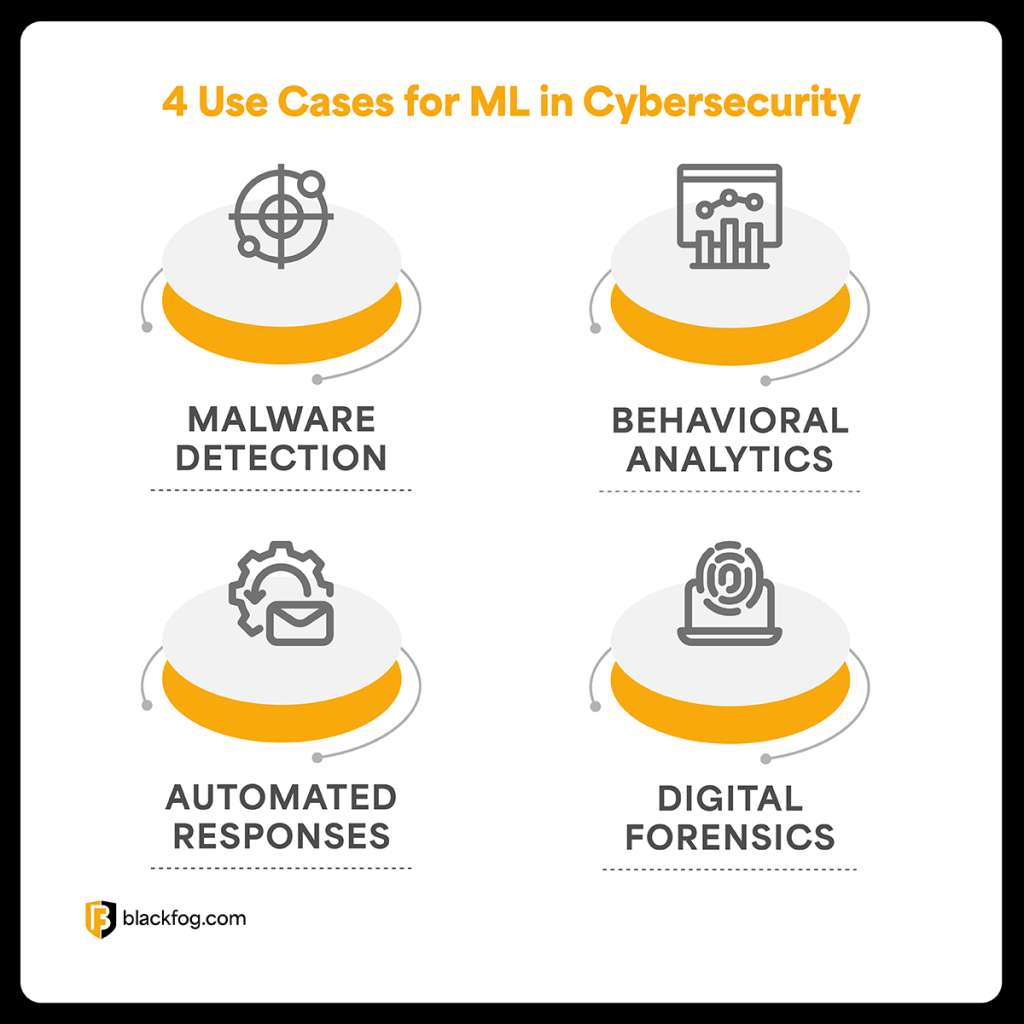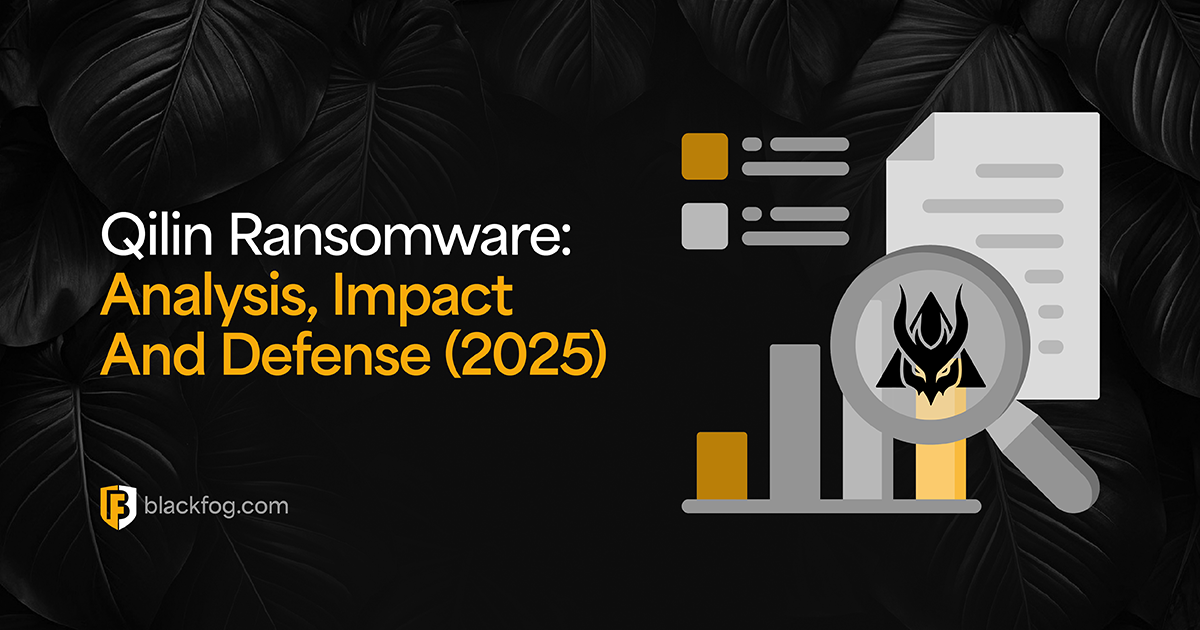
Machine Learning in Cybersecurity: Tactics and Trends
Cybersecurity threats in 2025 are growing in scale, frequency and sophistication. Today’s attackers are increasingly using automated tools, artificial intelligence and advanced evasive tactics to bypass traditional defenses and exfiltrate data undetected. This means that for businesses, the stakes have never been higher.
A single breach can cost millions of dollars in lost revenue, reputational damage and regulatory fines, particularly when ransomware or data exfiltration is involved. In this fast-moving landscape, leaders must adopt smarter, faster and more adaptive solutions. Increasingly, that means turning to AI and machine learning in cybersecurity to detect anomalies, predict attacks and respond in real-time.
Why Machine Learning Is Essential in Modern Cybersecurity

Cyberattacks are surging in scale and sophistication. According to our latest research, the number of publicly recorded ransomware attacks rose by 63 percent in the second quarter of 2025. This was the largest quarterly increase since we started tracking these figures in 2020. Healthcare was the most targeted sector, followed by government and services.
However, this may be just the tip of the iceberg. Our research indicates that more than 80 percent of all ransomware attacks go unreported, making the true scale of the problem even harder to determine.
What’s more, it’s estimated that 560 ,000 new malware variants are detected across the globe every day, with more than a billion active malware programs thought to be in circulation. The use of tools such as automation is increasing the risk, allowing hackers to attack targets at scale.
Faced with these fast, adaptive threats, traditional signature‑based defenses often struggle to keep up. This is where machine learning (ML) steps in. This analyzes patterns across vast datasets to identify subtle anomalies, predict new attack vectors and automate incident response before data can be compromised.
ML systems can detect zero‑day exploits, adapt to polymorphic malware and reduce alert fatigue. This makes it an essential part of the toolkit for malware detection, prediction and real‑time defense in today’s cybersecurity landscape.
“Machine learning in cybersecurity is no longer a nice-to-have, it’s a necessity. The sheer volume and sophistication of attacks in 2025 mean that only AI-driven, real-time detection can stay ahead of cybercriminals. By continuously learning and adapting, these systems can identify threats that humans or traditional tools would miss, including the subtle signs of unauthorized data exfiltration, and stop them before valuable information leaves the network. Preventing data from being stolen is the ultimate defense against costly breaches.”
– Dr Darren Williams, Founder and CEO, BlackFog
How Machine Learning Works in Cybersecurity

At its core, machine learning is about teaching systems to learn from data and respond intuitively, rather than relying on fixed rules. In cybersecurity, this means using algorithms to identify patterns, detect anomalies and make decisions based on evolving threats. The more data a system processes, the better it becomes at recognizing what normal and abnormal activity look like.
There are three main types of machine learning. By understanding how they work, businesses can build adaptive systems that evolve alongside the threat landscape, offering more intelligent and resilient protection.
- Supervised learning: These models are trained on labeled datasets that include known examples of malware, phishing emails or normal user behavior. The simplest and most hands-on approach, this model learns to recognize these categories and can then classify new, unseen data accordingly. For example, a supervised model can be used to detect ransomware variants based on known patterns in file behavior or registry changes.
- Unsupervised learning: By contrast, this uses unlabeled input to find hidden patterns or clusters in the data provided. This is especially useful for identifying anomalies that may indicate a threat, such as an employee accessing data at an unusual time or from an unfamiliar device. It is a key tool in detecting insider threats and the early stages of a breach.
- Reinforcement learning: The closest equivalent to how humans learn, these models learn through positive or negative feedback on their decision making, improving their processes based on the outcomes of previous actions. In cybersecurity, reinforcement learning can be used to automate response strategies, such as dynamically adjusting firewall rules or isolating devices during an active threat, based on what has worked in past incidents.
These models can be enhanced further with techniques like deep learning in cybersecurity, which uses multi-layered neural networks to detect complex threats in real-time with greater accuracy.
Major Use Cases and Applications for Machine Learning in Cybersecurity

Machine learning is not a single solution. Instead, it serves as a powerful engine that can be embedded across multiple elements of a cybersecurity strategy. Because ML tools continuously learn and adapt based on incoming data, they can be used in everything from early threat detection to post‑incident forensics. Below are some of the most important areas where machine learning is being actively deployed to strengthen cyber resilience.
Malware and Endpoint Detection
Machine learning is transforming the way malware is detected and is particularly useful when fighting against signatureless and fileless attacks. Traditional tools rely on known patterns that often fail to spot these types of malware, but ML models can identify them by looking closely at how code interacts with systems.
This enables faster detection of previously unseen threats, including polymorphic malware and zero-day exploits. At the endpoint, ML algorithms monitor activity in real-time and detect threats that would otherwise bypass static defenses.
Behavioral Analytics
By continuously monitoring user and network behavior, ML can flag anomalies that may signal insider threats, compromised accounts or active intrusions. These systems learn what normal behavior looks like for each user, device and workload, then trigger alerts when deviations occur. For example, they can spot unusual working patterns or login attempts from unrecognized locations.
This makes them highly effective at identifying lateral movement, privilege escalation or large-scale data transfers. This can often be done before a breach is fully underway, allowing tools to step in to block attempted data exfiltration early. Behavioral analytics also reduce false positives, helping security teams focus their efforts where it matters most.
Automated Threat Response and SIEM
When machine learning is integrated with security information and event management (SIEM) tools, it creates a foundation for autonomous response to alerts. AI-enhanced systems can triage threats, correlate logs and even initiate containment actions without human input. Combined with tools like intrusion detection and prevention systems and anti data exfiltration solutions, ML helps organizations shift from reactive to proactive defense.
As the volume and speed of alerts grows, ML-powered SIEM solutions help separate important signals from the background noise, detecting complex attack chains and shortening the time to response.
Vulnerability Management and Forensic Intelligence
ML can also be used to assess and prioritize vulnerabilities based on exploitability, context and active threat intelligence. This helps organizations focus on the most urgent risks, rather than being overwhelmed by patch backlogs.
It also has a role to play in post-breach scenarios. Forensic tools powered by machine learning can analyze vast amounts of data in order to reconstruct attack timelines, identify affected systems and even predict future attacks. This forensic intelligence helps accelerate recovery and improves preparedness for future incidents.
Key Benefits and Challenges of Incorporating ML
Integrating machine learning into a cybersecurity framework offers a range of advantages. Faster decision making, greater threat visibility and continuous learning all allow ML-powered systems to take a more proactive approach to their defenses and shut down issues like ransomware and data exfiltration before they have a chance to do damage. Key benefits include:
- Improved threat detection: ML models can identify subtle or unknown threats that traditional tools miss, including zero-day attacks and fileless malware.
- Faster response times: Automated analysis and remediation can reduce delays in responses and limit the impact of active threats.
- Reduced false positives: By learning from past alerts, ML improves the accuracy of threat identification, cutting alert fatigue for security teams and reducing the chances of incorrect assessments disrupting genuine business activities.
- Better scalability and efficiency: ML-driven systems can monitor vast networks in real-time without requiring constant human oversight.
However, adopting machine learning technology is not without its challenges. Businesses must be prepared to manage the following potential issues in order to ensure a successful implementation:
- Data quality: ML systems rely on large volumes of high-quality data. Poor inputs lead to unreliable outcomes.
- Complex implementation and integration: Deploying ML across existing infrastructure requires careful planning, skilled teams and robust testing.
- Adversarial attacks: Hackers can attempt to manipulate ML models by feeding them misleading data, potentially bypassing detection.
- Cost and resource intensity: Advanced ML systems may demand significant investment in both technology and expertise.
Addressing the Risk of Adversarial Machine Learning
As machine learning becomes a central part of enterprise cybersecurity, it is no surprise that attackers are adapting in response. Many hackers are fully aware of the capabilities of machine learning models and are actively working to exploit or evade them. This has led to the rise of threats such as adversarial machine learning.
This is a set of techniques that involve manipulating the data that ML systems rely on in order to produce false outputs, reduce its ability to accurately assess threats, or even bypass detection entirely.
Common adversarial techniques include:
- Data poisoning: Feeding corrupted or misleading data into a model during training to reduce its accuracy.
- Evasion attacks: Altering inputs in subtle ways that fool the model without triggering alerts.
- Model inversion: Attempting to reconstruct sensitive data by probing how a model responds to certain inputs.
Steps businesses should take to mitigate these risks include:
- Implementing continuous monitoring: Regularly audit model outputs to identify anomalies or unexpected behavior.
- Increasing cybersecurity team awareness: Ensure analysts and engineers are trained to recognize adversarial patterns.
- Using adversarial training: Expose models to manipulated inputs during training to increase recognition and improve their resilience.
- Validating data sources: Apply strict controls on the quality and provenance of training and operational data.
Best Practices for Adding ML to the Cybersecurity Stack
Deploying machine learning in cybersecurity is not about replacing existing systems, but enhancing and extending them. When implemented effectively, ML can strengthen an organization’s ability to detect, analyze and respond to threats. However, success depends on strategic integration and the right supporting infrastructure.
To ensure a successful implementation, businesses should:
- Integrate with existing tools: Machine learning models should work alongside established platforms such as SIEM, endpoint protection systems, IPS cyber security and wireless intrusion detection solutions for broader coverage.
- Ensure data availability and quality: ML systems rely on access to high volumes of clean, relevant data. Secure storage, tagging and structured logging are critical in doing this safely.
- Prioritize explainability: Choose models that offer transparency into decision making to support human oversight and compliance.
- Start with high-impact use cases: Focus initial deployments on areas like anomaly detection or phishing identification where ML can add immediate value.
- Review and refine regularly: Machine learning tools must be retrained and tested continuously to remain effective as threats evolve.
Evolving Trends and the Future of ML in Cybersecurity
AI technology has already been evolving at a rapid pace over the last few years. It’s to be expected that this will continue as capabilities and understanding grow. This is likely to open up a range of new possibilities for the deployment of machine learning – both for offensive use by hackers and defensive applications among cybersecurity pros. As we look ahead, several key developments are reshaping the role of machine learning in cybersecurity:
- Greater automation and agentic AI: Experts predict that autonomous AI agents will begin to manage entire security workflows from detection through to remediation. This hyper-automation trend promises faster and more reliable incident response.
- Rise of large language models (LLMs): These tools are increasingly used for applications like vulnerability discovery, malware analysis and phishing detection.
- The growing AI arms race: In some cases, attackers themselves are leveraging LLMs to craft their own evasion malware and launch malware attacks more quickly.
The use of machine learning is likely to grow quickly as it becomes more accessible. For example, recent research demonstrated one AI-generated malware using reinforcement learning that bypassed Microsoft Defender around eight percent of the time – and did so for just $1,600.
Therefore, firms have to respond. Figures highlighted by Morgan Stanley expect investment in AI-powered cybersecurity to grow from $15 billion in 2021 to $135 billion by 2030 as firms recognize the importance of this technology to their defenses.
To stay ahead, organizations must embrace machine learning not just as a detection tool, but as a core strategic component capable of spotting and blocking advanced data exfiltration tactics that legacy systems cannot. In an era where threats evolve in real-time, incorporating ML into cyber defenses is essential for meaningful resilience.
Share This Story, Choose Your Platform!
Related Posts
New Matrix Push C2 Abuses Push Notifications to Deliver Malware
Investigating Matrix Push C2, a browser based command and control system that uses push notifications to deliver malware, run phishing campaigns, and steal data across platforms.
Clop’s New Extortion Wave Hits Oracle E-Business Suite
Clop exploited an Oracle E-Business Suite zero-day to steal data from major organizations. Here’s how it happened and what it means for supply-chain security.
Qilin Ransomware: Analysis, Impact and Defense (2025)
In-depth 2025 Qilin ransomware analysis covering its rise, attack chain, intimidation tactics, double extortion model, and defense strategies.
Kerberoasting Attack Explained: Example And Prevention Guide
Kerberoasting attack explained with examples, detection tips, and prevention steps. Learn how to secure Active Directory from credential theft.
BlackFog Appoints Former Yahoo CFO Kenneth A. Goldman To Board Of Advisors
Kenneth A. Goldman joins BlackFog’s Board of Advisors, bringing decades of tech and finance leadership to accelerate enterprise growth and AI-based data protection.
Why Every Business Needs A Cybersecurity Roadmap
Find out what's involved in creating a cybersecurity roadmap and how having one can help navigate an extremely challenging threat landscape.






